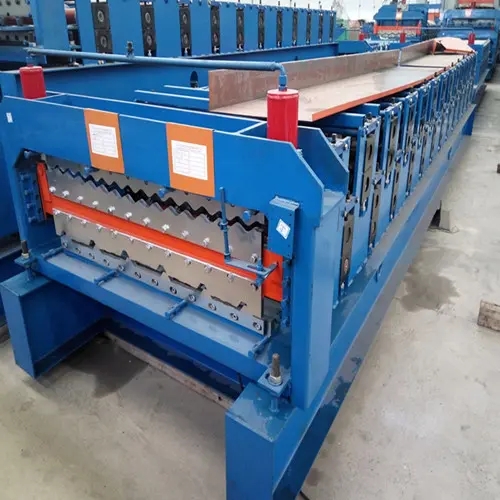
Understanding Pipe Thread Rolling Machines A Comprehensive Overview
In the industrial landscape, the production of threaded pipes is a critical process, especially in applications involving oil and gas, plumbing, and various types of construction. To ensure the integrity and reliability of threaded connections, manufacturers often turn to pipe thread rolling machines. These machines are designed to create precise and durable threads on pipe surfaces through a cold working process known as rolling.
The Process of Pipe Thread Rolling
Pipe thread rolling differs significantly from traditional cutting methods. Instead of removing material through cutting, this process deforms the existing material through compression. The rolling process involves two or more cylindrical dies that apply pressure to the pipe as it is passed between them. This action causes the material to flow and form threads with enhanced structural integrity.
One of the main advantages of the rolling process is that it increases the density of the material in the thread area, making the threads stronger and more resistant to wear and tear. This is particularly important for applications where pipes may be subject to high pressure, temperature fluctuations, or corrosive environments.
Types of Pipe Thread Rolling Machines
Pipe thread rolling machines come in various configurations to accommodate different sizes and types of pipes. The two most common types are
1. Radial Rolling Machines These machines feature dies that move in a radial direction around the pipe. The pipe is held stationary while the dies roll around it, creating deep and robust threads. Radial rolling is often used for larger diameter pipes because it can handle heavy loads and produce a wide variety of thread profiles.
2. Axial Rolling Machines In this setup, the pipe is moved through the machine while the dies are positioned on either side. This type of machine is typically used for smaller pipes and can produce threads at a faster rate. Axial rolling is also beneficial for high-volume production environments where efficiency is critical.

Benefits of Using Pipe Thread Rolling Machines
The adoption of pipe thread rolling machines offers numerous advantages over traditional threading methods, including
- Increased Strength As mentioned, the rolling process helps to enhance the grain structure of the material, producing threads that are more durable and less prone to stripping or deformation.
- Higher Production Rates With the ability to perform multiple threads simultaneously and operate at high speeds, pipe thread rolling machines significantly increase throughput in manufacturing settings.
- Lower Scrap Rates Since material is not removed during the threading process, there's a marked reduction in waste compared to cutting methods. This not only makes the process more economical but also contributes to more sustainable manufacturing practices.
- Versatile Applications These machines can accommodate a wide range of pipe sizes and thread types, making them an essential tool in various industries, from construction to automotive.
Conclusion
Pipe thread rolling machines are an integral part of modern manufacturing, providing efficient, strong, and consistent threading solutions for pipes. As industries continue to evolve and demand higher quality components, the importance of these machines will only grow. By understanding the capabilities and advantages of pipe thread rolling machines, manufacturers can better position themselves to meet the challenges of the industry and deliver reliable products to their customers. Whether for small-scale operations or large production facilities, investing in advanced threading technology is key to staying competitive in today’s fast-paced market.